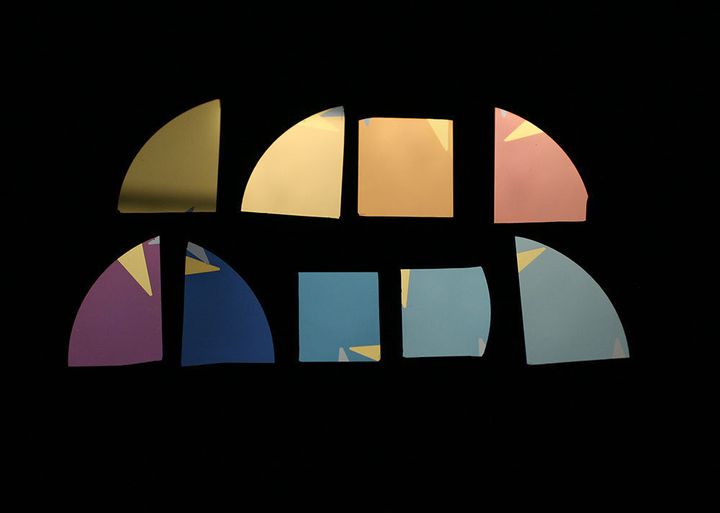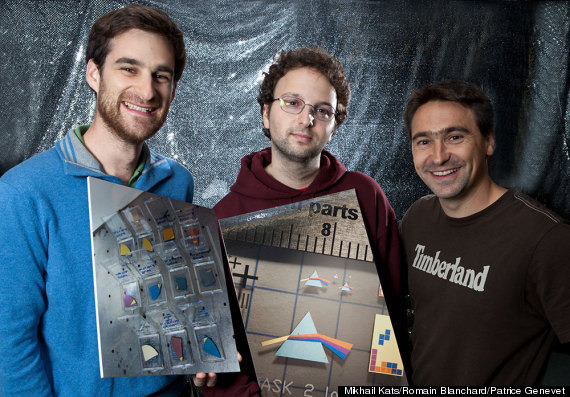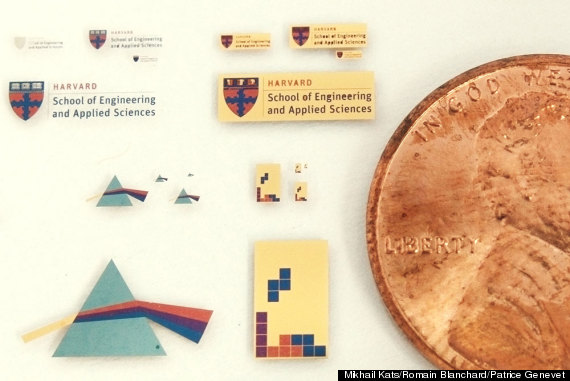
When researchers at Harvard's School of Engineering and Applied Sciences wanted to explore the world of color manipulation, they reached for the periodic table instead of a paint palette.
Harvard's SEAS discovered a new way to customize the color of metal surfaces, using two light-absorbing elements, gold and germanium. The announcement was made this week in an article featured in Nature Materials, which outlined how the researchers successfully tailored the color of atomically thin opaque materials employing the often overlooked phenomenon of interference.

Romain Blanchard, Mikhail Kats, and Patrice Genevet, members of Federico Capasso's research group at Harvard SEAS. (Photo by Eliza Grinnell, SEAS Communications.)
The team of scientists, led by applied physics professor Federico Capasso and comprising graduate students Mikhail Kats, Romain Blanchard, and Patrice Genenvet, explain the breakthrough through the phenomenon of a rainbow appearing in a thin film of gasoline on a wet road. The vivid colors appear in the puddles because of interference: the crests and troughs of light waves interfere with each other as they pass through the oil into the water and reflect back up into the air, with some colors (wavelengths) appearing brighter than others.
This is the same effect that Capasso and Kats sought to simulate in their research. Only this time, the scientists are working with metals instead of translucent liquids -- germanium-coated gold sheets to exact.
The absorbing germanium coating traps colors in the same ways that the oily puddles do, but instead of reflecting a spectrum of color, the crests and troughs line up closely to reflect one color only. Most astonishingly, a color change is produced when the thickness of the coating is changed by subtracting or adding just a few atoms. Like any proud Harvard alumni, the students used their school's signature colors -- crimson and black -- to demonstrate their discovery, producing the colors from Harvard's logo using sheets with only a 20-atom difference in thickness.

The different colors in this photograph are a result of tiny variations in thickness: just 10 to 15 atoms of germanium separate the pink color from the violet, and another 10 to 15 atoms change the color from violet to dark blue. A penny is shown for size comparison. (Photo courtesy of Mikhail Kats and Lulu Liu.)
Harvard's Office of Technology Development has already filed a patent application and is pursuing ways of commercializing their research, hoping to work through either a start-up company or license to an existing organization. Capasso's team anticipates that their technology could be used in a variety of consumer products and optical devices, from solar cells and optical filters to visual arts and jewelry.
Read more about the team's exploration of interference in opaque materials here.
Let us know what you think of the discovery in the comments section.

